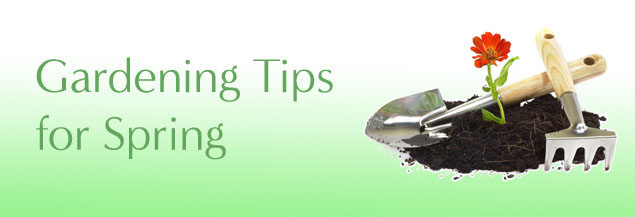 Hi folks, have you ever wondered why other people’s gardens are fuller than your own in the bloom of spring? You see their flowers blossom faster and their vegetables greener and healthier and the garden is has not a single weed in sight. Of course it takes a lot of hard work and a bit of skill, but no it’s not just by luck. These people time their garden preparation and know when it’s time to plant. They know which plant combinations work and are always learning new tricks.
Hi folks, have you ever wondered why other people’s gardens are fuller than your own in the bloom of spring? You see their flowers blossom faster and their vegetables greener and healthier and the garden is has not a single weed in sight. Of course it takes a lot of hard work and a bit of skill, but no it’s not just by luck. These people time their garden preparation and know when it’s time to plant. They know which plant combinations work and are always learning new tricks.
Even without the fancy tools and expensive input, you can also make your garden a source of bigger, healthy-looking veggies and beautiful blossoming flower beds. Here are a few gardening tips for spring:-
- Ensure that the soil is dry – In Ireland we are lucky to have plenty of rainfall(too much sometimes!!). However, flower gardening requires dry soils, not clumpy, concrete-like beds. You can check soil consistency by squeezing a lump in your hands. Your soil is ready if it crumbles and falls through your fingers.
- Buy your plants from a reputable supplier – sadly, the source of your plants can greatly influence your harvest. A number of large nursery owners sometimes neglect one or two plants. If you are unlucky to end up with these unhealthy plants, you may be talking about dry, brown shrubbery a few weeks down the line.
- Use quality fertilizers – Choosing fertilizers is a little technical so if you can get someone knowledgeable in that area then you may as well consider asking him or her for help. If not, simply head to your favored supplier and tell them what you intend to plant and they will gladly recommend suitable fertilizers. The likes of the Johnstown Garden Centre in Kildare would be happy to assist you in this regard.
- Check for frost, snow and ice damage – well, it hasn’t been too cold this year but that doesn’t guarantee safety. Always check your plants every time you get to the garden this spring. Damaged crops have to be removed at once since they are known to harbour pests, insects and even fungi. Whenever you expect a hard frost, you can cover seedlings with buckets, cardboard etc.
- Make compost – Spring is also a good time to start a compost pit or pile. You might be a beginner this year but next spring you’ll need more than just factory fertilizer. Collect all your weeds and cut-offs and pile them somewhere at the corner of the garden. Add equal amounts of chopped up green and brown material. You can cover the heap with an opaque polythene paper to protect it from direct sun heat. By this time next year your compost should be ready. You can learn how to make compost at Howdini.
- You can be one step ahead of the cabbage moth – cabbage moths like to come to the surface as soon as the frost is gone. It lays its eggs against the lower stems of cabbage, kale, broccoli, cauliflower and Brussels sprout. Often, once the eggs hatch, the plant loses its vigor and dies. You can protect your crops from root maggots by covering with row covers, or you can apply pieces of barrier paper around the base of the crops. You should know that maggots are a bigger problem in wet, cool soils.
- Plant your bulbs around St. Patrick’s Day – get out your lilies, crocus, hyacinth, and daffodils early in spring. Some may take until next spring to blossom and others may even take another two or three years before they have enough food reserves necessary for flowering. Nonetheless, now is the time to take them out of the pots and bowls and let them bask in the plenty of spring.
- Divide perennials and tend to their beds – time the division to take place when shoots are about 2 and 4 inches tall. New beds for perennial flowers are made by making a 6-inch deep layer of rotten manure or compost and working the bed deeply. When plants grow in deep, rich soils, they are unlikely to suffer the summer drought. Existing beds should be cleared of plant debris and mulched to protect them from weed growth.
- Apply oils to trees and shrubs – apply horticultural oils to pears just as the buds begin to appear and again 10 days later to control leaf blister mite and psylla. As for apples, the application should be done when half of the green tissue can be seen developing in the buds. Shrubs and ornamental trees are sprayed with dormant oil to control aphids, spider mite and scale.
Summary- gardening tips for spring
With a little bit of hard work and preparation, these gardening tips for spring should leave your garden blossoming throughout spring. And if you are too busy to look after the garden yourself just post a job on Tradesmen.ie and get up to 4 quotes from rated gardeners in your Area!
Cheers
Oliver Dempsey
Tradesmen.ie
18th April 2014
Here are some other articles that you might be interested in below:-
Home Improvement Tips that Add Value to your Home
Tips for Removing Common Stains in the Home
Tips for Reducing your Heating Bill
Home Improvement Tips for Wet Weather






